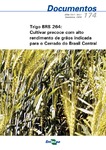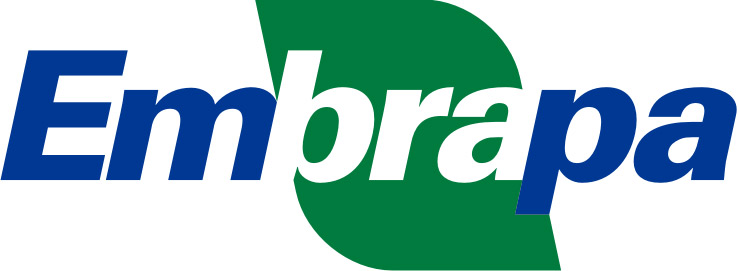Please use this identifier to cite or link to this item:
http://www.infoteca.cnptia.embrapa.br/infoteca/handle/doc/570289| Title: | Trigo BRS 264: cultivar precoce com alto rendimento de grãos indicada para o cerrado do Brasil Central. |
| Authors: | ALBRECHT, J. C.  SÓ e SILVA, M.   ANDRADE, J. M. V. de   SCHEEREN, P. L.   TRINDADE, M da G.   SOARES SOBRINHO, J.   SOUSA, C. N. A. de   BRAZ, A. J. B. P.   RIBEIRO JÚNIOR, W. Q.   SOUSA, M. A. de   FRONZA, V.   YAMANAKA, C. H.   |
| Date Issued: | 2006 |
| Citation: | Planaltina, DF: Embrapa Cerrados, 2006. |
| Pages: | 21 p. |
| Description: | ABSTRACT: Embrapa, through Embrapa Savanas and Embrapa Wheat have developed a new wheat cultivar, denoted BRS 264 (Triticum aestivum L), for the savana region of Central Brazil. The new cultivar is originated from the crossing Buckbuck/Chiroca/Tui. The selection from the F2 population was performed at Embrapa Savanas, at Planaltina, DF. It is indicated for irrigated cultivation during dry seasons, in Minas Gerais, Goiás, Bahia, Mato Grosso and Distrito Federal. This cultivar presents the following main features: high production potential, large adaptability, good agronomical characteristics, industrial quality according to the market demands and precocity (avarage period from the emergence until maturation of 110 days). The avarage grain yield is around 15% superior as compared to the other two cultivars mostly planted within the Brazilian savana area, Embrapa 22 e Embrapa 42. |
| Thesagro: | Características Agronômicas Cerrado Melhoramento Genético Vegetal Trigo Triticum Aestivum Variedade |
| NAL Thesaurus: | plant breeding varieties |
| Keywords: | Cultivo Wheats Agronomic characters Cultivation |
| Series/Report no.: | (Embrapa Cerrados. Documentos, 174). |
| Type of Material: | Folhetos |
| Access: | openAccess |
| Appears in Collections: | Série Documentos (CPAC)  |
Files in This Item:
| File | Description | Size | Format | |
|---|---|---|---|---|
| doc174.pdf | 2.69 MB | Adobe PDF |  View/Open |









